Spark Observations with Streaming Wildlife Cams
Using wildlife cams in the classroom is a great tool for helping students hone their observation skills. The Next Generation Science Standards uses science practices, such as observation, to build critical thinking and problem-solving skills. Wildlife cams capture students’ attention and offer an authentic 24/7 view of the natural world. Students can closely observe bird nests, visit underwater habitats, and explore the depths of the rainforest.
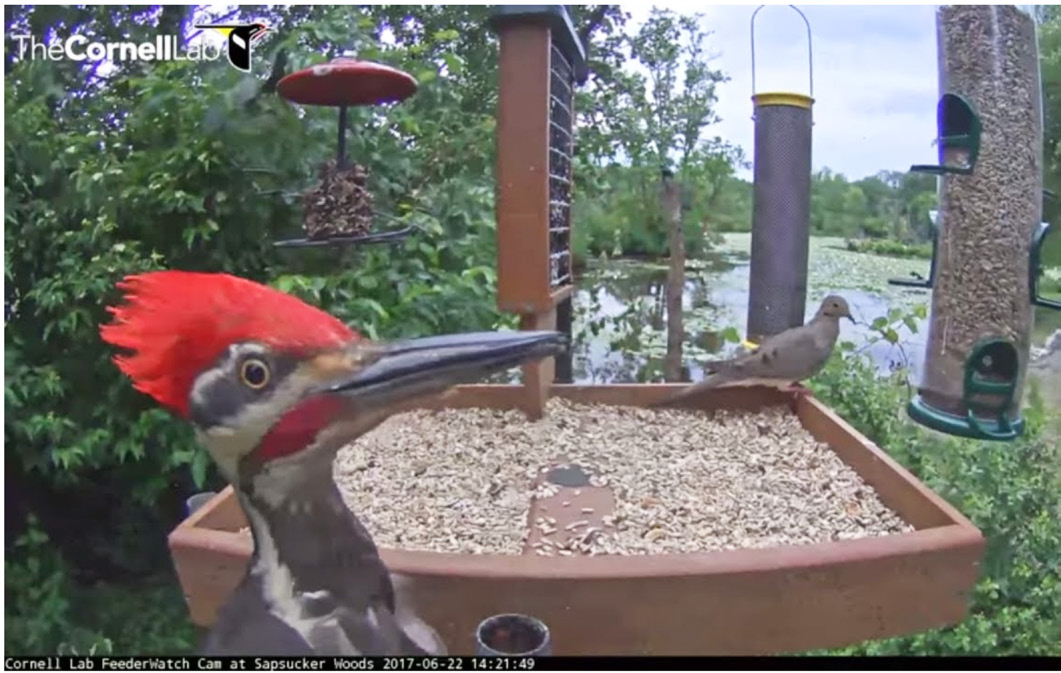
In this spark activity, students will observe a live-streaming bird cam and then create a comic from their observations. Creating a comic is a great way to focus student observation. It sparks students’ curiosity, motivates them to gather essential details for their comics, and can engage students not typically interested in science.
- Select and cue a live-streaming wildlife cam to view. See tips and suggestions in next accordion section.
- Print off comic strip templates (younger student sample, older student sample), enough for each student. These are word documents so you can modify.
- Gather colored pencils, crayons, markers, or other drawing utensils.
As questions arise during their observations, invite students to add them on the Wonder Wall. The Wonder Wall provides a space to collect and display student questions that you can revisit, answer later, or turn into investigations. Designate a space for your Wonder Wall and encourage students to write and post their questions there. To learn more about the Wonder Wall and how to encourage students to make observations and develop testable questions, download our free Students as Scientists unit.
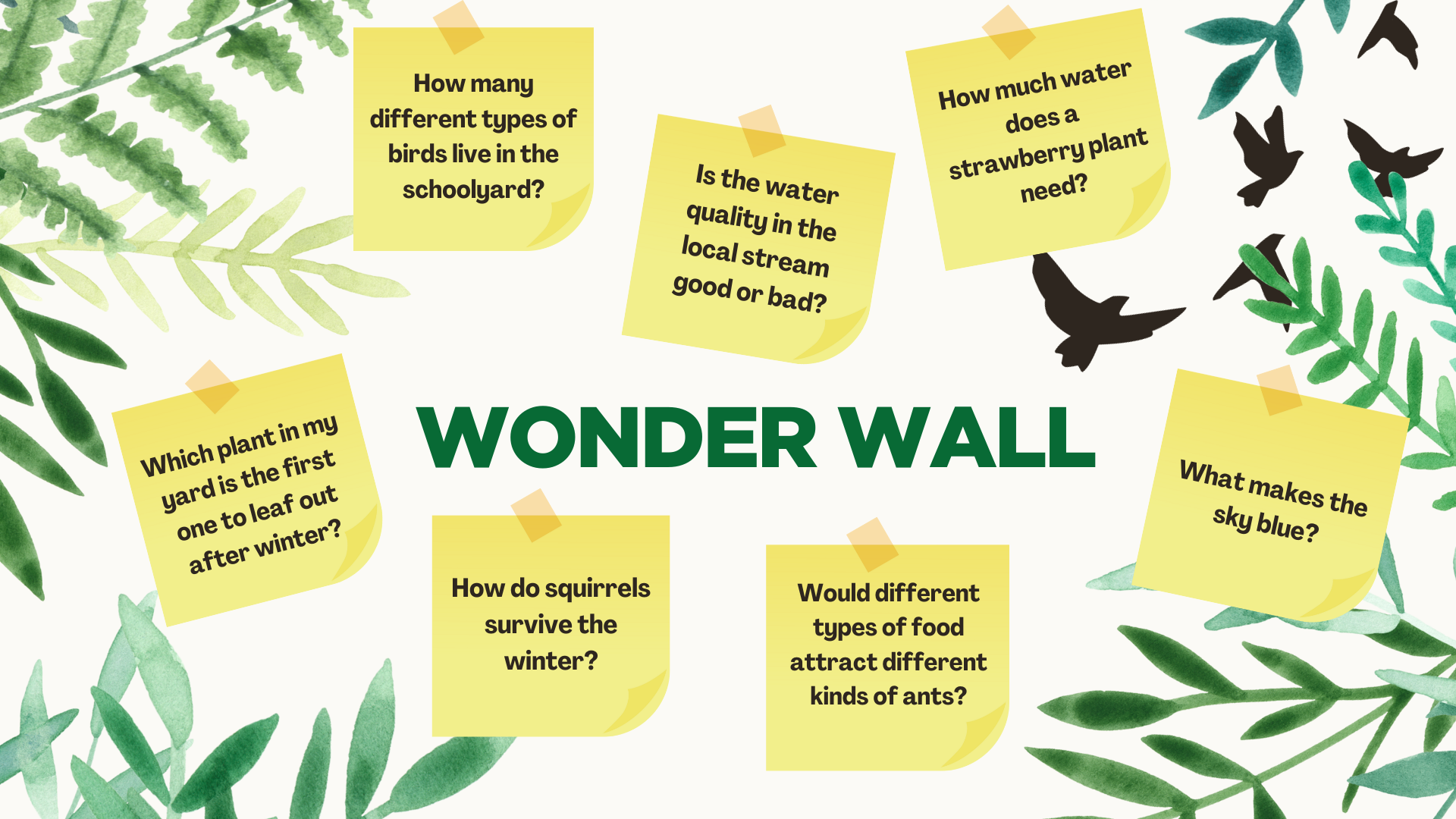
- Opt for live streaming cameras over highlight videos. They provide real-time views of living creatures, making learning more exciting and authentic by capturing the unpredictability of nature and enhancing understanding of animals and the science process. If your goal is to have your students explore wild behavior, we recommend using a wildlife cam rather than a zoo, aquarium, or rescue cam.
- Play to your students’ interests. If you discover that your students absolutely love elephants, pandas, or giraffes, find a cam located in the natural habitat of those animals. If you plan to have students work in groups, group them by animal interest rather than randomly, and allow them to watch and share about their specific animal.
- Explore science phenomena. Relate cams to planned content. For instance, if you’re teaching about biodiversity, use a cam in the Amazon Rainforest—the world’s most biodiverse region–to showcase the rich variety of plants and animals. If you’re focused on a particular habitat or class of animals, choose a cam that complements that content.
- Visit another part of the world. Pick a cam that relates to geographic areas you’re teaching about. For instance, if you’re covering the marine ecosystems Chinese New Year, Lewis and Clark’s expedition, the Louisiana Purchase, or, choose a camera in the corresponding location so students experience the local flora and fauna.
- Boost and broaden engagement. Showing a cam can be a relaxing way to start the day or class or left on to provide an intriguing classroom backdrop. Consider inviting caregivers to join in the adventure by watching the cam from home or at the local library, fostering family engagement!
You can search online for active cams, but here are some of our favorites:
- The Cornell Lab of Ornithology has 16 bird cams located around the world showing feeders and nests.
- Explore.org offers over 75 live cams, with many focused on wildlife from around the world.
- The National Park Service has placed 100s of live-streaming cams in U.S. parks. Visit https://www.nps.gov and search webcams.
Observe
Invite students to watch the cam you have chosen for a brief period (around 5 to 10 minutes, depending on grade level). If there’s little action, use the rewind function if it is available. Students can jot down notes or sketches, or simply observe.
Tip: Uh oh… there aren’t animals!
This can happen, even with an active camera. If you don’t see animals, prompt students to observe the habitat closely, building the patience that is needed in scientific study. If time or internet issues are a concern, you can have a short video clip ready to show a desired animal or behavior. For example, searching for videos of “chimpanzee grooming” or “hummingbird nestlings” will yield many interesting results!
Draw a Comic
Hand out empty comic strips to each student, and prompt them to craft a short and simple comic strip about animal behaviors they’ve observed. They should select something they noticed and draw it in the second frame (leaving the first frame empty). Then ask: “What happened before?” (for frame 1) and “What might happen after?” (for frame 3 and beyond). Encourage imaginative sequencing based on their observations. Depending on your objectives with this activity, you may want to ensure that students base their comics upon facts not just using their observations to make an imaginative comic. You will see in the gallery below that when students were not given explicit instructions to include scientific facts, they chose to create imaginative stories. This can be fun and engaging, but if your purpose is to create realistic comics then provide specific instructions for including facts.
For older students, encourage paragraph writing for each panel, blending informational and creative elements. Encourage them to research their animal and include scientific explanations.
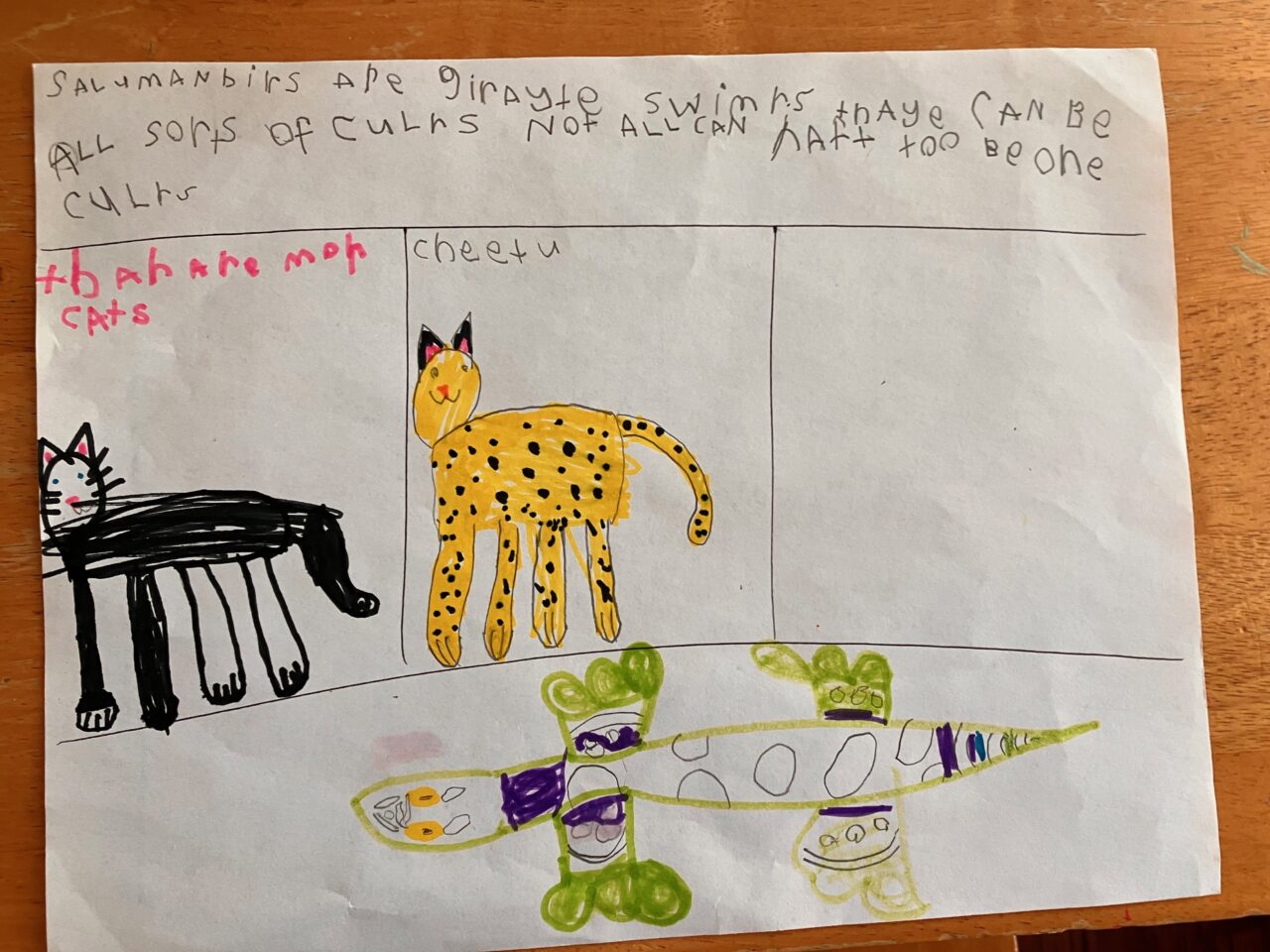
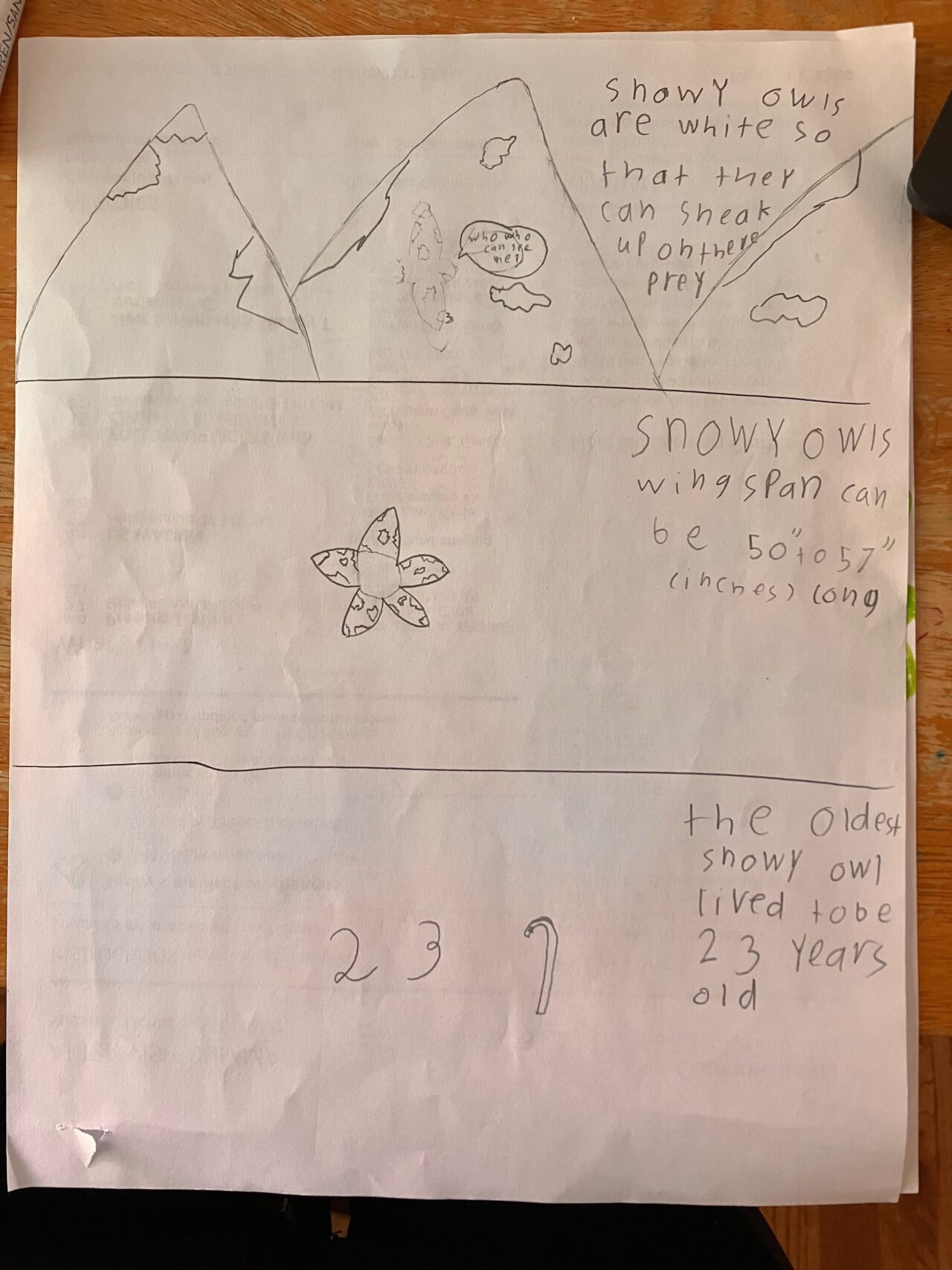
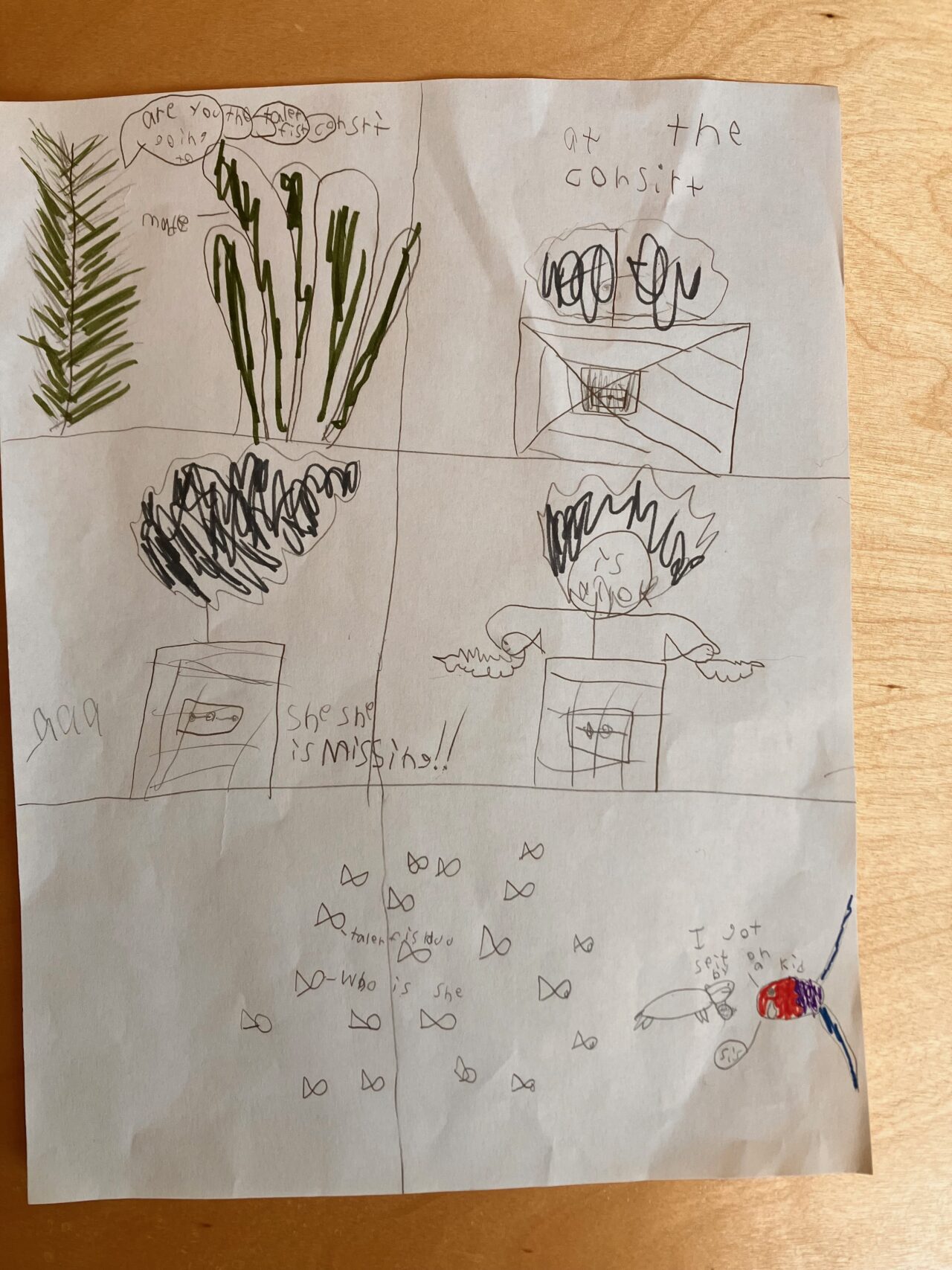
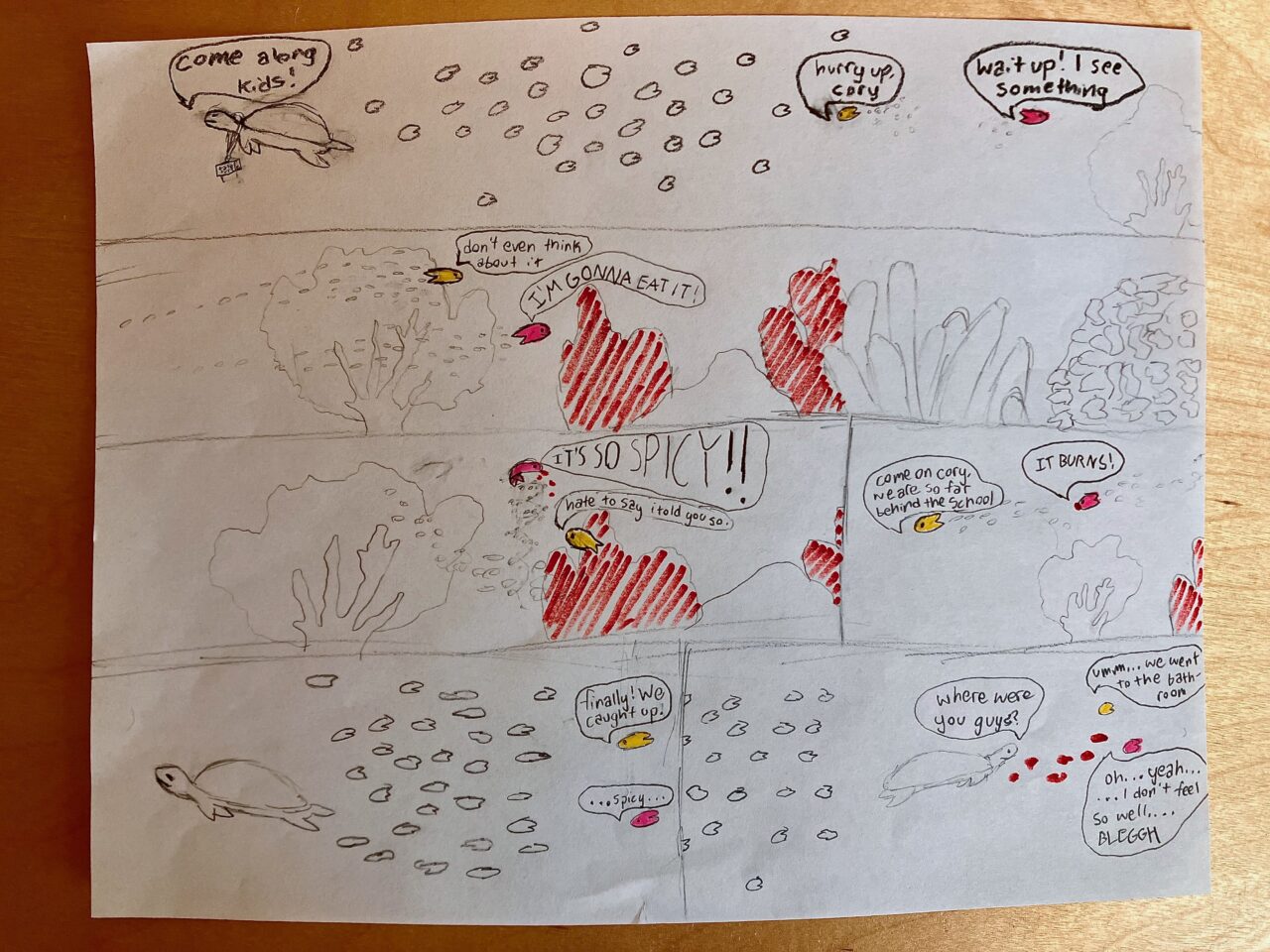
Make a Gallery Walk
Display the finished comics around the room and do a gallery walk so students can view each other’s work. After the gallery walk, ask them to write down any questions they have about their observations or new questions that arose after viewing other’s work on sticky notes and post these to the Wonder Wall.
Lead a class discussion about their observations and any questions that arise. Ask:
- How were the comics different? How were they similar? Why are there differences?
- What questions did you have about the animal after you observed it and drew your comic?
- What questions do you have now that you’ve seen other comics?
- What questions do you have about animals we see around here?
- How can we turn these questions into testable questions that we could explore by collecting and analyzing data?
You may wish to add any of the questions generated based on the comics or the reflection to your Wonder Wall.
Invite students to create a journal to log their observations and develop an “I wonder” list while watching a wildlife cam. Journals can be part of a notebook or you can you use one of these templates: Journal for Younger Students or Journal for Older Students. Show the cam at the beginning of class each day or each week, and use their journal to log their observations and questions over the course of a season. For example, they can draw and write about a nest as the chicks hatch, grow up, and fledge.
TIP: For younger students, you may want to model note taking to prepare them for recording their own observations, for example, by drawing or using short sentences and phrases to document what they see.
During this experience, encourage students to:
- Add their questions to their “I wonder” list.
- Observe the cam animals and write factual observations about what they see and hear.
- Examine the differences between observations and inferences. Lesson 2 of the Students as Scientists unit provides scaffolding and activities to help with this.
- Explore their questions through inquiry-based research. This can be done independently with non-fiction resources or supported by investigations as described in the Students as Scientists unit.
If students are struggling to make observations or hesitant to share, you can use the following questions to support them in making observations and asking questions:
- What is the animal doing?
- How do you explain what you are seeing?
- What do you notice about the animal’s habitat?
- How does the animal move?
- How does the animal interact with others? With its environment?
- What do you wonder about this animal?
- Why might the animal be behaving this way?
We hope you’ve sparked many questions your students will be excited to explore. If you’re ready to go further and support student investigations, the Students as Scientists curriculum can be your guide. The resource is available in K-5 and 6-12 grade band versions.